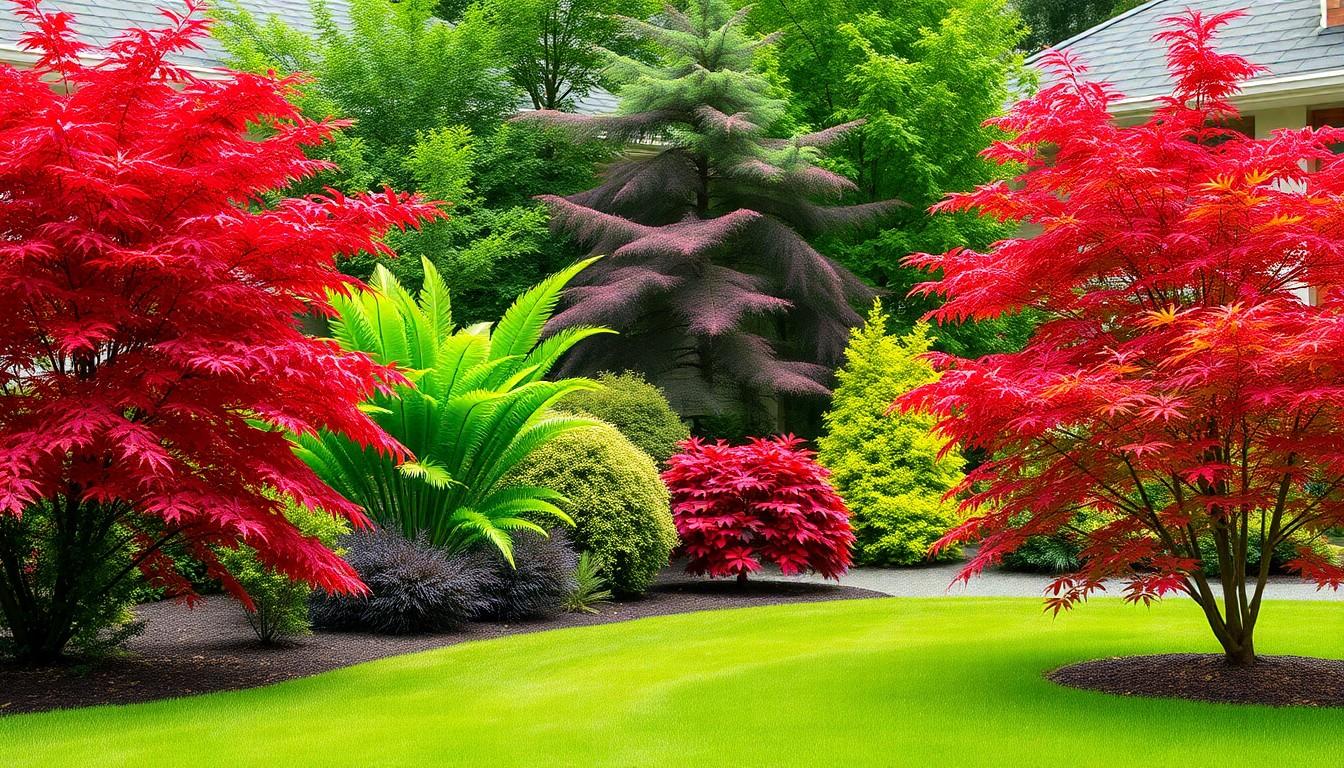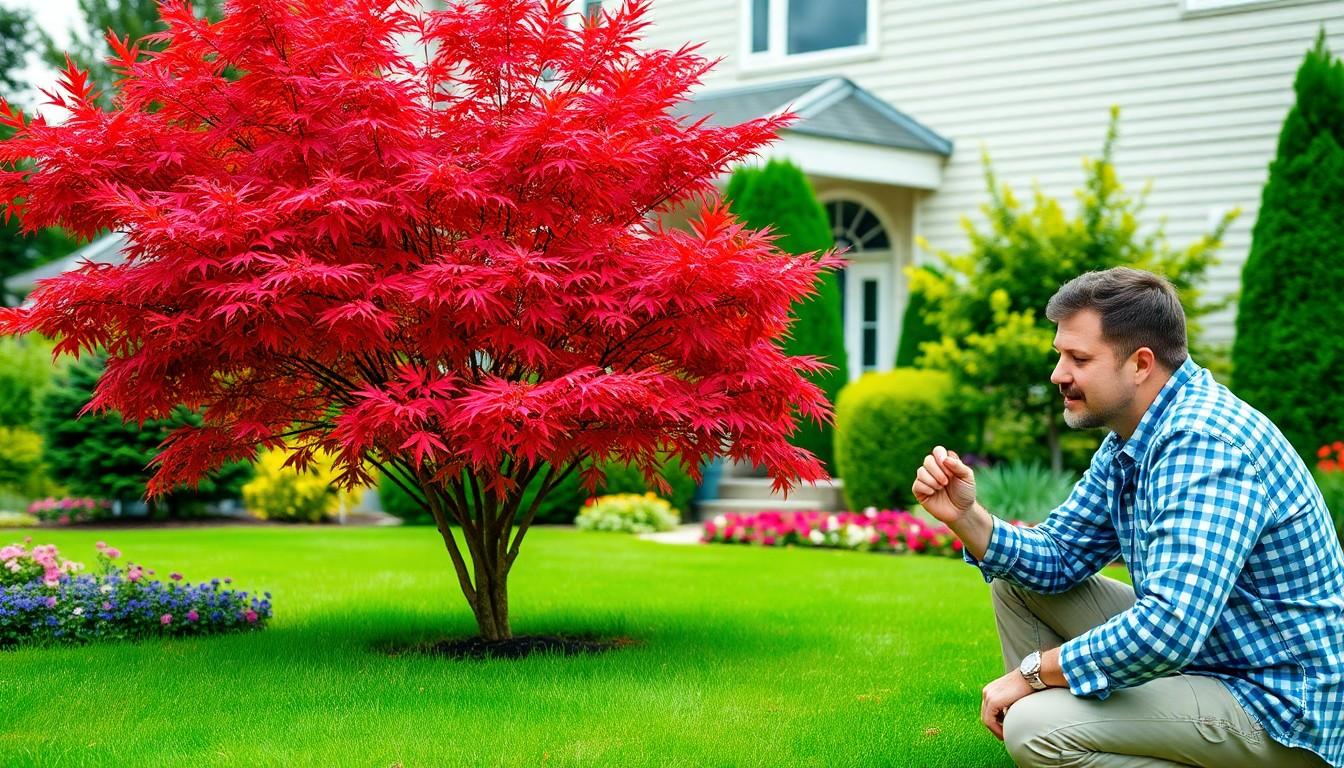Japanese maples aren’t just trees; they’re the VIPs of landscaping. With their stunning foliage and graceful forms, these beauties can transform any front yard from drab to fab faster than you can say “bonsai.” Imagine stepping out of your front door to a burst of vibrant colors that change with the seasons. Who wouldn’t want that?
Benefits Of Japanese Maple In Landscaping
Japanese maples serve as striking features in landscaping, bringing both beauty and character to outdoor spaces. Their unique qualities contribute significantly to enhancing front yard aesthetics.
Aesthetic Appeal
Japanese maples stand out due to their ornamental appeal. These trees showcase a variety of leaf shapes and colors, ranging from deep burgundy to bright green. Foliage displays incredible texture, adding visual interest throughout the year. Elegant branching structures create stunning silhouettes, complementing contemporary and traditional designs alike. Gardeners often use these trees to establish focal points, drawing attention to specific areas. Proper placement can frame entries or accent garden beds effectively.
Seasonal Changes
Seasonal transformations enhance the appeal of Japanese maples. In spring, fresh leaves emerge in vibrant hues, offering a refreshing touch. Summer brings lush greenery, providing shade and a cool ambiance. As autumn approaches, foliage shifts to captivating reds, oranges, and yellows, creating a colorful display. Winter unveils graceful branches, allowing garden outlines to remain visible despite the cold. Each season unveils a new aspect of the tree, ensuring it remains an attractive feature in any landscape year-round.
Choosing The Right Japanese Maple

Selecting the appropriate Japanese maple enhances front yard landscaping. Various factors influence this choice, including types and size.
Types Of Japanese Maple
Different types of Japanese maples exist, offering unique characteristics for landscaping. Acer palmatum ranks as the most common species, known for its delicate leaves and versatility. Varieties such as Bloodgood provide rich red foliage, while Green dissectum boasts cascading branches. Other notable options include the upright form of Acer japonicum, which showcases bright green leaves during summer. Homeowners can choose from a range of sizes and colors, ensuring the perfect match for any garden theme.
Size And Shape Considerations
Considering size and shape aids in creating a balanced landscape. Japanese maples range from dwarf varieties about 3 feet tall to larger selections reaching up to 25 feet in height. Measurements are crucial when selecting a spot in the garden since some types spread wider than others. Small types fit well in compact spaces, while larger options serve as striking focal points. Shapes can vary from upright habits to weeping forms, allowing for creativity in design and layout.
Planting And Care For Japanese Maples
Caring for Japanese maples involves specific techniques that ensure their health and beauty. Attention to soil, watering, and fertilization helps these trees thrive in front yard landscapes.
Soil Requirements
Soil quality plays a crucial role in the growth of Japanese maples. A well-draining, loamy soil provides the best conditions for healthy roots. Nutrient-rich soil enhances foliage vibrancy and tree stability. Acidic to neutral pH levels, ranging from 5.5 to 6.5, support optimal growth. Adding organic matter improves soil structure and fertility. Mulch can also help retain moisture while regulating temperature.
Watering And Fertilizing
Watering practices significantly impact Japanese maple health. Deep watering once a week helps establish strong roots, especially during summer months. Maintaining moisture in the soil prevents drought stress, while avoiding soggy conditions minimizes root rot risks. Fertilizing once in spring, using a balanced fertilizer designed for trees and shrubs, ensures adequate nutrient availability. Slow-release formulas promote steady nutrient uptake throughout the growing season. Adjusting water and fertilizer based on seasonal changes supports overall tree vitality.
Design Ideas For Front House Landscaping
Incorporating Japanese maples into front house landscaping enhances visual appeal. These trees offer various design opportunities.
Accenting Pathways
Accentuate pathways by lining them with Japanese maples. Choose smaller varieties, such as dwarf types, for a subtle touch. Positioning them on either side creates symmetry and guides visitors through the garden. Use contrasting plants alongside, such as ground cover or low ornamental grasses, to highlight the vibrant foliage. Seasonal color changes of the maples will add interest throughout the year, providing dynamic beauty to walkway areas. Opt for a mix of textures to complement the delicate leaves and create an inviting atmosphere.
Creating Focal Points
Establishing focal points with Japanese maples enhances front yard design. Plant a larger variety, like Bloodgood, in a prominent spot to draw attention. Ensure it’s surrounded by complementary plants like flowering shrubs or ornamental stones. Using rocks or wood mulch can accent the base, offering a natural look. Heights of surrounding plants should vary to enhance the visual interest. Japanese maples, with their striking silhouette and vivid colors, serve as a stunning centerpiece, making the front yard memorable.
Common Issues And Solutions
Japanese maples may encounter challenges despite their beauty. Understanding these common issues and effective solutions ensures healthy growth and longevity.
Pests And Diseases
Pests can significantly affect the health of Japanese maples. Aphids, spider mites, and scale insects often infest during the growing season, causing leaves to distort. Treatment includes using insecticidal soap to eliminate these pests. Additionally, fungal diseases like powdery mildew can develop in humid conditions. Regularly inspecting foliage helps identify early signs. Applying a fungicide creates a barrier against infections, promoting overall health and vitality.
Pruning Techniques
Pruning ensures the structural integrity and aesthetic appeal of Japanese maples. Begin by removing dead or crossing branches to improve airflow and light penetration. Assess each branch’s direction, selectively cutting those that obscure others. Late winter is the ideal time for pruning, allowing the tree to recover before spring growth. Always use clean, sharp tools to reduce the risk of disease transmission. Maintaining a balanced canopy enhances the tree’s beauty and encourages vibrant foliage throughout the seasons.
Conclusion
Japanese maples are more than just trees; they’re stunning focal points that can transform any front yard. With their vibrant colors and graceful shapes, they add year-round beauty and charm. Homeowners can create inviting outdoor spaces by carefully selecting the right varieties and incorporating them into thoughtful landscape designs.
Caring for these trees is essential to maintaining their health and aesthetic appeal. By following proper planting techniques and addressing common issues, Japanese maples can thrive for years to come. Ultimately, incorporating these elegant trees into front house landscaping not only enhances curb appeal but also fosters a serene environment that invites admiration and enjoyment.

